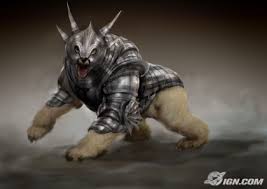
The iron ore bears are queuing up this morning. From Bloomie, there’s Goldman:
Australia, the largest supplier, sent 504 ships from Port Hedland during the first quarter carrying enough iron-ore exports to build more than 700 Golden Gate Bridges. Shipments jumped 35 percent to the biggest buyer, China, where inventories have ballooned to the highest ever.
…“Supply growth will overtake demand growth this year for the first time in a long time,” said Christian Lelong, a Sydney-based commodity analyst with Goldman Sachs Group Inc., which predicts prices to average $108 this year and slide to $80 in 2015. “You will start to see some signs of surplus probably during the course of the second quarter.”
During the quarter, the total of 504 departing ore carriers was up 30 percent from a year earlier and included 42 ships that hauled at least 230,000 tons each, up from 11, the port says. It takes about 1.6 tons of ore to produce 1 ton of steel, which is used in cars, appliances and building materials, according to the Organization for Economic Cooperation and Development.
And Credit Suisse:
…A possible strike by tugboat operators at Port Hedland may disrupt shipments. The Maritime Union of Australia is balloting its workers on a potential strike and expects the results by the end of April. The union is seeking additional pay and leave entitlements.
While China’s stimulus measures may help support prices, the gains probably won’t last, according to Credit Suisse.
“The underlying mismatch between supply growing at 11 percent and demand advancing at closer to 4 percent should leave iron-ore prices very vulnerable to further falls,” the Zurich- based bank said in a report on March 31.
And Citi:
….“We’re still bearish on iron-ore prices,” said Ivan Szpakowski, an analyst in Hong Kong at Citigroup Inc. “We’re forecasting a pretty large surplus, and we think that’s going to be the case regardless of the exact growth rate you get out of China or the exact price you have iron ore. It’s pretty unavoidable this year.”
And also from Bloomie, GTrain at Mac Bank has rolled over:
While data show a “substantial rise” in port inventory, iron ore held by mills appears to be dropping, Macquarie said. Total iron-ore inventory in China is about 40 million metric tons lower than the last time port stocks of the raw material were at similar levels as today back in 2012, Macquarie said.
…Macquarie said historical data show there has “often” been an inverse relationship between iron ore prices and the percentage of mill-owned stocks held in China’s ports, with mills holding more stock in port when prices are falling, and vice versa. When prices drop, the mills destock domestic ore “more aggressively” than seaborne ore, according to the bank.
…“With deliverable inventory higher, there would appear to be less potential for a squeeze in prices,” the bank wrote. “Our view that iron ore prices should rise in 2Q on the back of mill restocking hasn’t changed, but the risk of a squeeze pushing prices significantly higher is perhaps lower than we previously thought.”
So, those bearish on the port pile are wrong but GTrain is bearing up on restock potential owing to the port pile. Nice bait and switch there.
Resistance to lower prices is futile!

